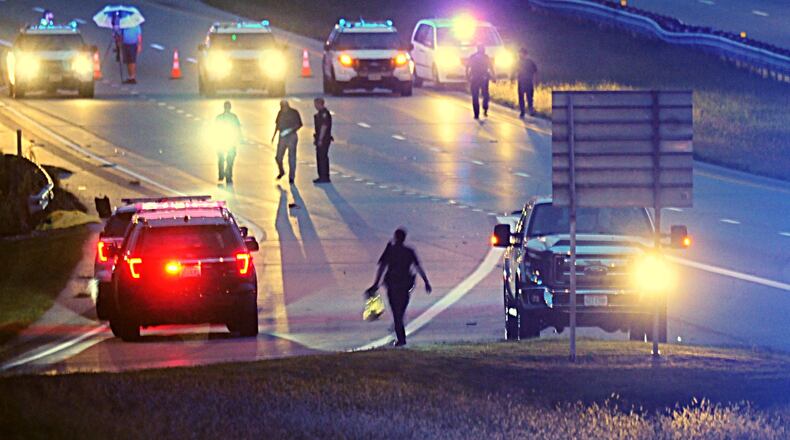Locally, at least six fatal pedestrian accidents and twice as many injuries have occurred in the North Main Street corridor since 2014, according to Dayton Police and county sheriff’s statistics. That includes a 17-year-old hit and killed and a 23-year-old seriously injured in January near Carson Avenue.
Nearly 6,300 pedestrians were killed on U.S. roads last year, according to a new report by the Governors Highway Safety Association. That’s the most since 1990.
In Ohio, more than 130 pedestrians were killed and 2,600 injured last year statewide, according to the Ohio Department of Transportation. That’s down from 2017, when there were 145 pedestrian fatalities. But prior to that, it was up every year since 2013, when 88 pedestrians were killed in Ohio.
Dayton’s Department of Public Works is studying the problem, along with others at the Ohio Department of Transportation and the Miami Valley Regional Planning Commission. A consultant should have more information next month.
Joseph Weinel, a senior engineer in Dayton’s Department of Public Works, said some of the ways that the city has improved pedestrian safety is speed enforcement, such as adding speed cameras. The city also has narrowed some roads and reduced lanes.
Most deaths happen at night and away from intersections, the Governors Highway Safety Association report says. From 2008 to 2017, the number of nighttime pedestrian fatalities increased by 45 percent, compared to an 11 percent increase in daytime pedestrian fatalities.
It’s important to make sure there is enough street lighting and adequate sidewalks, Weinel said.
“The city always tries to supply adequate sidewalk. If there’s not adequate sidewalk, people want to walk in the street,” Weinel said.
MORE: Ohio health care transparency law blocked by judge decision
Mary Hoy, Ohio Department of Transportation district traffic planning engineer, said some recent ODOT projects that focused on pedestrian safety include a Clark County project in the Park Layne community that installed sidewalks, lighting and improved crossings.
Construction will begin in the spring on a project along Ohio 741 near the Dayton Mall. That will mean a continuous sidewalk from Ohio 725 to Laveta M. Bauer School when completed, Hoy said.
Smartphones and SUVs
The increase in deaths could be linked to distracted driving and the rise in SUVs, which are more likely to kill a pedestrian than a passenger car, the report says.
The national study notes a significant growth in smartphone use, which can be a source of distraction. Pedestrian deaths had been declining for decades until 2009, when smartphone sales and data use began to spike, said Richard Retting, a consultant and former top traffic safety official with the city of New York who authored the report.
“Cell phone use is one of the few metrics I can find that shows a consistent change, a large scale change, year after year,” Retting said.
There has also been a growing shift in U.S. vehicle sales away from passenger cars to light trucks and SUVs. The number of pedestrian fatalities involving SUVs increased by 50 percent from 2013 to 2017.
Pedestrians struck by a large SUV are twice as likely to die as those struck by a car, according to the report. That’s because SUVs are larger and are more likely to hit people in the head and torso, causing more serious injuries.
MORE: Dayton fire, police to train in empty Good Samaritan Hospital
“Any time you’re hit by something, the force of the blow is how big the thing is that hit you times how fast it was traveling. So speed is a big factor in pedestrian deaths but also the size of the vehicle is a factor as well,” said Angie Schmitt, writer with Streetsblog USA, which reports on walking, biking and transit conditions.
The increase in pedestrian deaths from 2008 to 2017 came as overall traffic deaths fell 6 percent. The national report notes that while vehicles have steadily added safety features that protect occupants, pedestrians “remain just as susceptible to sustaining serious or fatal injuries when struck by a motor vehicle.”
About the Author
